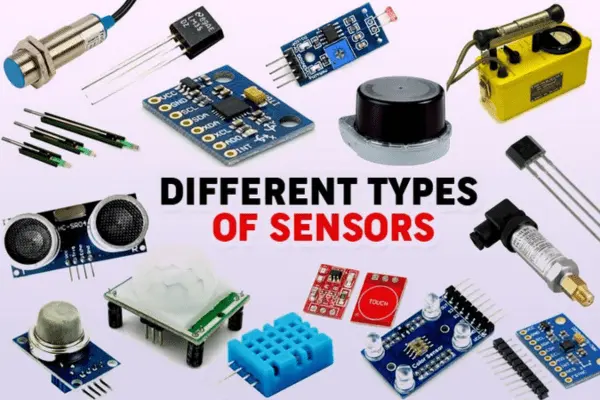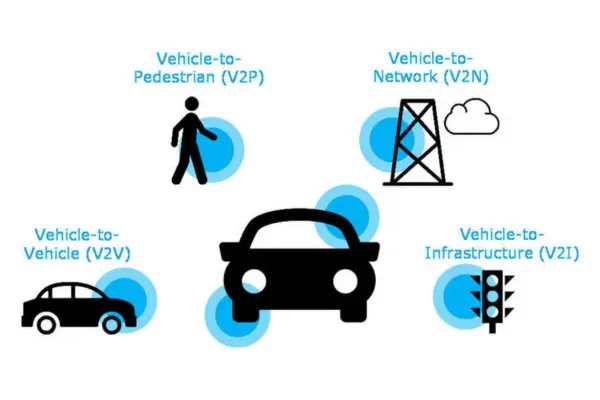Introduction
Self-driving automobiles, also known as autonomous vehicles, are at the forefront of advanced technology. They have the power to completely transform transportation by enhancing accessibility, safety, and efficiency. To drive and function independently, these cars need a complex mix of autonomous vehicle hardware and software. The hardware elements are the foundation of the vehicle’s operation, even though the software is essential for data processing and decision-making. This article explores the fundamental hardware elements of autonomous cars, stressing their advantages, difficulties, and overall influence on transportation in the future.
Important Autonomous Vehicle Hardware Elements for Self-Driving Cars
1. Sensors: Autonomous Vehicles’ Eyes and Ears
A variety of sensors used in autonomous cars give them vital environmental information that helps them sense and navigate their environment. Among these sensors are:

- LiDAR (light detection and ranging): LiDAR sensors produce high-resolution three-dimensional maps of their surroundings by using laser pulses. LiDAR is essential to real-time decision-making because it correctly detects the position and motion of objects, pedestrians, and other vehicles.
- Radar: Radar sensors, as opposed to LiDAR, use radio waves to measure the speed and distance of objects. Because they are less impacted by rain, fog, or snow, they are very useful in inclement weather and provide dependable operation in a variety of settings.
- Cameras: Using sophisticated computer vision techniques, high-resolution cameras record visual data. In addition to being essential for object categorization and lane detection, these cameras aid in object recognition, traffic sign detection, and pedestrian discrimination.
- Ultrasonic sensors: These sensors help in short-range detection by timing how long it takes for sound waves to reflect off of nearby objects. They are mostly employed for adjacent obstacle detection and parking assistance.
- GPS (Global Positioning System): The Global Positioning System, or GPS, helps autonomous cars pinpoint their exact location and create the best routes by providing precise localization and navigation data.
2. Computing Hardware: Automation’s Brain

Large volumes of sensor data require sophisticated computer technology to process. Important elements consist of:
- Central Processing Unit (CPU): The CPU handles general processing duties and instantly analyzes data from several sensors.
- Graphics Processing Unit (GPU): Because GPUs are designed to handle complicated visual data, they are crucial for deep learning and image processing applications in driverless cars.
- Field-Programmable Gate Arrays (FPGAs): FPGAs provide highly efficient real-time processing of sensor data. They are appropriate for specialized tasks like signal processing and machine learning inference because of their reprogrammable nature.
- Sensor Fusion Units: These devices combine information from several sensors to produce a coherent and precise picture of the environment around the car, facilitating smooth decision-making and improved safety.
3. Control Systems: Facilitating Accurate Vehicle Functions
Sophisticated control systems are necessary for autonomous cars to make driving judgments. These consist of:
- Actuators: In charge of steering, braking, and accelerating, actuators convert computer commands into mechanical motions to guarantee accurate and seamless vehicle movement.
- Drive-By-Wire Systems: These electronic control systems increase vehicle control precision and response time by substituting digital commands for conventional mechanical linkages.
4. Communication Systems: Improving Safety and Connectivity
The safe and efficient operation of autonomous cars depends on effective communication. Among the essential communication technologies are:
Real-time data sharing between automobiles, networks, pedestrians, and infrastructure is made possible by vehicle-to-everything (V2X) communication, which enhances traffic control and safety.

5. Redundancy and Safety Systems: Guaranteeing Dependability
Autonomous vehicles use a variety of fail-safe techniques to reduce hazards, including emergency braking systems, redundant sensors, and backup power systems, which guarantee that the vehicle will continue to function even if a component fails.
6. Human-Machine Interface (HMI): Improving Communication with Users
Through intuitive features like speech recognition and visual displays, the HMI makes it easier for passengers to engage with the car and guarantees a smooth user experience.
Autonomous Vehicle Hardware Benefits
1. Increased Security
Increased safety is one of the biggest advantages of autonomous car hardware. Autonomous systems can significantly lower the risk of accidents by reducing human faults like weariness and distraction. Real-time processing guarantees speedy reaction times, and sophisticated sensors offer a 360-degree view of the environment, enabling prompt detection of dangers and obstructions.
2. Fewer Traffic Jams
To maximize traffic flow, autonomous cars interact with other cars and traffic infrastructure. Choosing the quickest routes, easing gridlock, and increasing overall transportation efficiency are all made possible with GPS and real-time traffic data.
3. Reduced Emissions and Fuel Use
Autonomous vehicles can drastically cut pollutants and fuel consumption by improving their acceleration and deceleration patterns. Furthermore, eco-driving algorithms improve energy efficiency even more, making the environment greener.
4. Enhanced Availability
For those who are unable to drive because of age, disability, or other reasons, autonomous vehicles offer more mobility. A larger populace benefits from the easy and reasonably priced transportation options provided by ride-sharing and autonomous taxi services.
5. A decrease in traffic fatalities and accidents
Autonomous vehicle hardware can drastically lower traffic accidents and fatalities by removing human error and integrating cutting-edge safety features.
6. Effective Parking Administration
Autonomous cars can park themselves and drop off passengers at their destinations, which eases traffic in cities and maximizes parking space use.
7. Economical Transportation
As driverless car fleets run by ride-sharing businesses proliferate, fewer people could need to purchase private vehicles, which would lower overall expenses and ease traffic.
8. Improved Traffic Control
Better control of traffic lights and congestion patterns is made possible by the valuable data that autonomous vehicles provide to traffic management systems.
Limitations and Difficulties with Autonomous Vehicle Hardware
1. Expensive
Widespread adoption is hampered by the high cost of the sophisticated technology needed for autonomous vehicles, such as LiDAR sensors, potent CPUs, and redundant systems.
2. Complexity of the System
Autonomous vehicles are difficult to maintain and debug due to their complex hardware and software combination, which raises operating expenses.
3. Issues with Reliability
Even with redundant systems in place, hardware issues and unplanned breakdowns are still possible hazards that must be managed.
4. Risks to Cyber security
Because autonomous cars are vulnerable to cyberattacks, strong security measures are necessary to stop illegal access and system manipulation.
5. Ethical Dilemmas
Critical decision-making raises moral and ethical issues that need serious thought, such as deciding between passenger and pedestrian safety.
6. Displacement of Jobs
Autonomous Vehicle Hardware adoption on a large scale could result in employment losses in sectors like logistics and transportation, requiring workforce adaptability.
7. Readiness of Infrastructure
Autonomous vehicles might not be completely supported by the road infrastructure as it stands, necessitating large investments to improve traffic systems and roads for V2X communication.
8. Privacy Issues with Data
Large volumes of data are gathered on passengers and their environment by autonomous cars. To keep the public’s trust, data security and privacy must be guaranteed.

Conclusion:
A key factor in determining how transportation will develop in the future is autonomous vehicle hardware. These vehicles can function safely and effectively with little assistance from humans thanks to the integration of sophisticated sensors, computer systems, control mechanisms, and communication networks. Even though there are many benefits, there are drawbacks that need to be carefully considered, including high expenses, system complexity, cybersecurity threats, and moral quandaries. To overcome these challenges and fully utilize autonomous vehicles, cooperation between governments, tech firms, and the general public is essential.
Visit Dorleco or send an email to info@dorleco.com for additional information on our autonomous vehicle solutions.


